

Report from the International Symposium of Byzantologists
NIŠ AND BYZANTIUM XXI
“Byzantium - Tradition and Contemporaneity“
Dr Miša Rakocija
Niš and Byzantium Scientific Symposium brought us together for the twenty-first time. This year we did not hide our satisfaction that we defeated the ugly evil that someone gave the beautiful name "corona". By giving the subtitles of Byzantium - Tradition and Contemporaneity to the Symposium this year we intended to underline once again the importance of Byzantium for modern European civilization, which rests on Byzantine spirituality, art and culture.
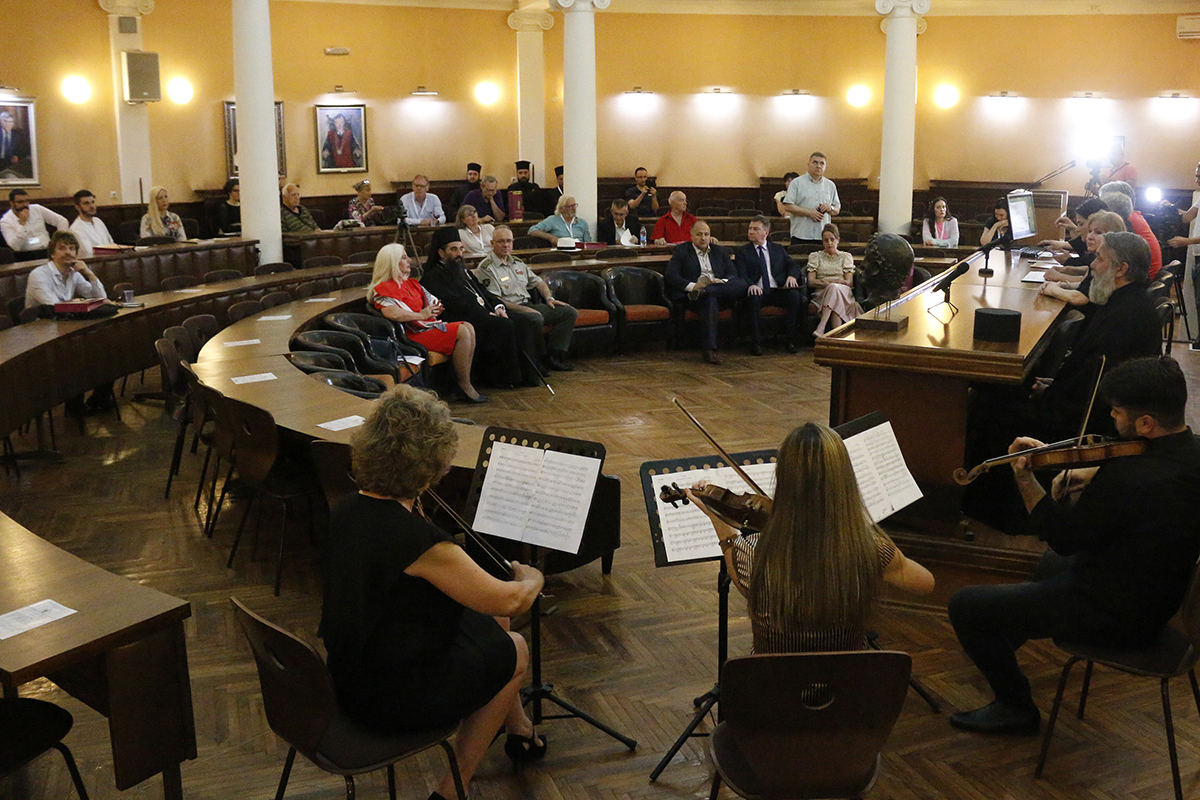
Opening of the XX Niš and Byzantium Symposium, ceremonial hall of the University of Niš (photo by M. Lavrenčić)
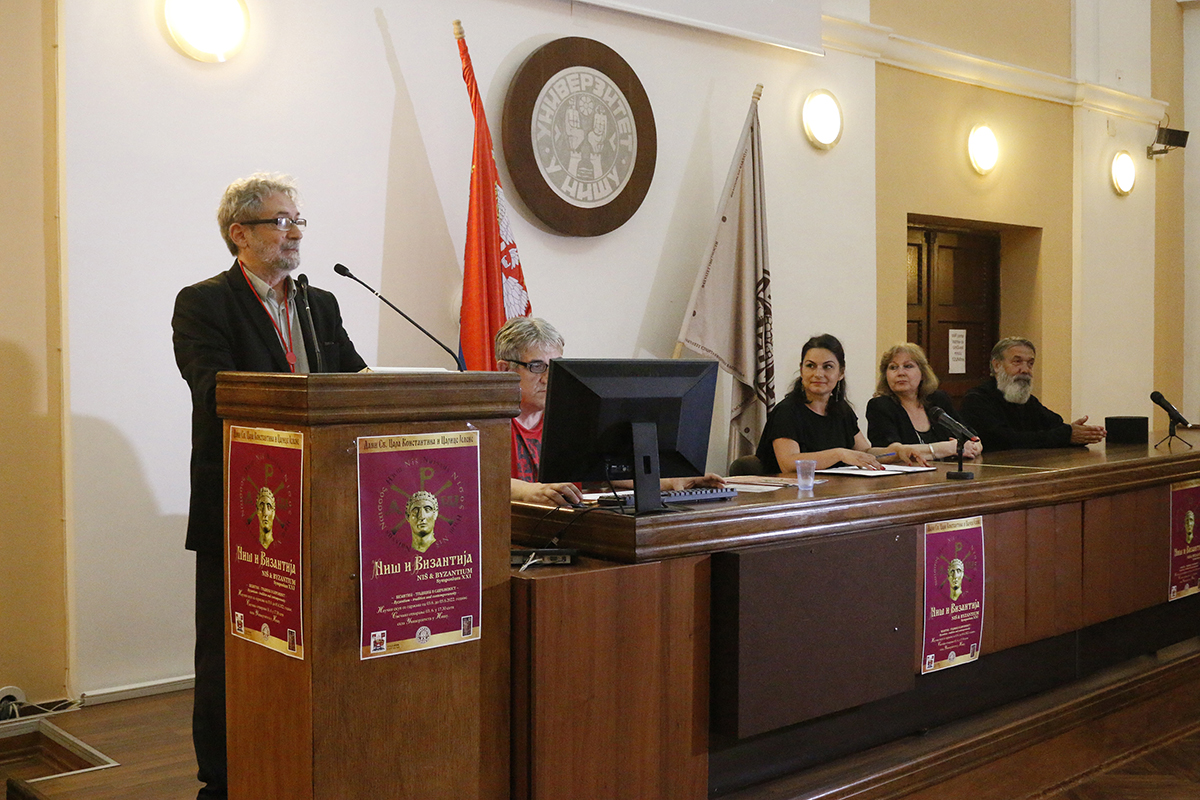
Dr Miša Rakocija, introductory speech (photo by M. Lavrenčić)
In 2022, for the twenty-first time, we addressed the participants of the gathering from the podium at the University of Niš, which together with the City of Niš, the Diocese of Niš and Niš Cultural Center gather prominent Byzantologists every year during the celebration of the festivity days dedicated to the city patrons St. Emperor Constantine and Empress Helen. Now, when we have entered the third decade of our work, we can conclude that Niš has become known throughout the world as the center for the study of Byzantology. The knowledge presented here made it possible to see the importance of the hometown of Emperor Constantine for the entire Christian world. We will not make a big mistake if we conclude, taking into account the modern development of the city, that the time has come to call our city, and for a reason, using old medieval epithet ,"the Glorious Niš City ".
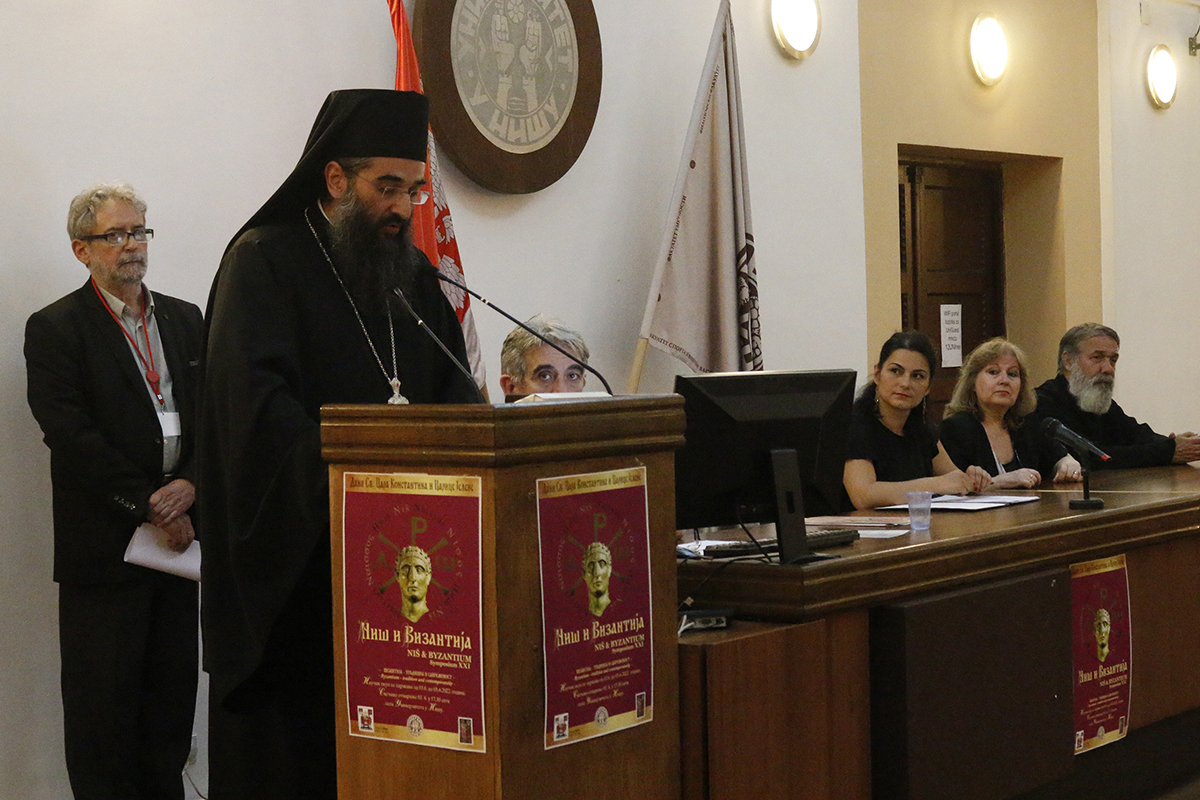
Opening of the Symposium, blessing by Bishop of Niš Arsenije (photo by M. Lavrenčić)
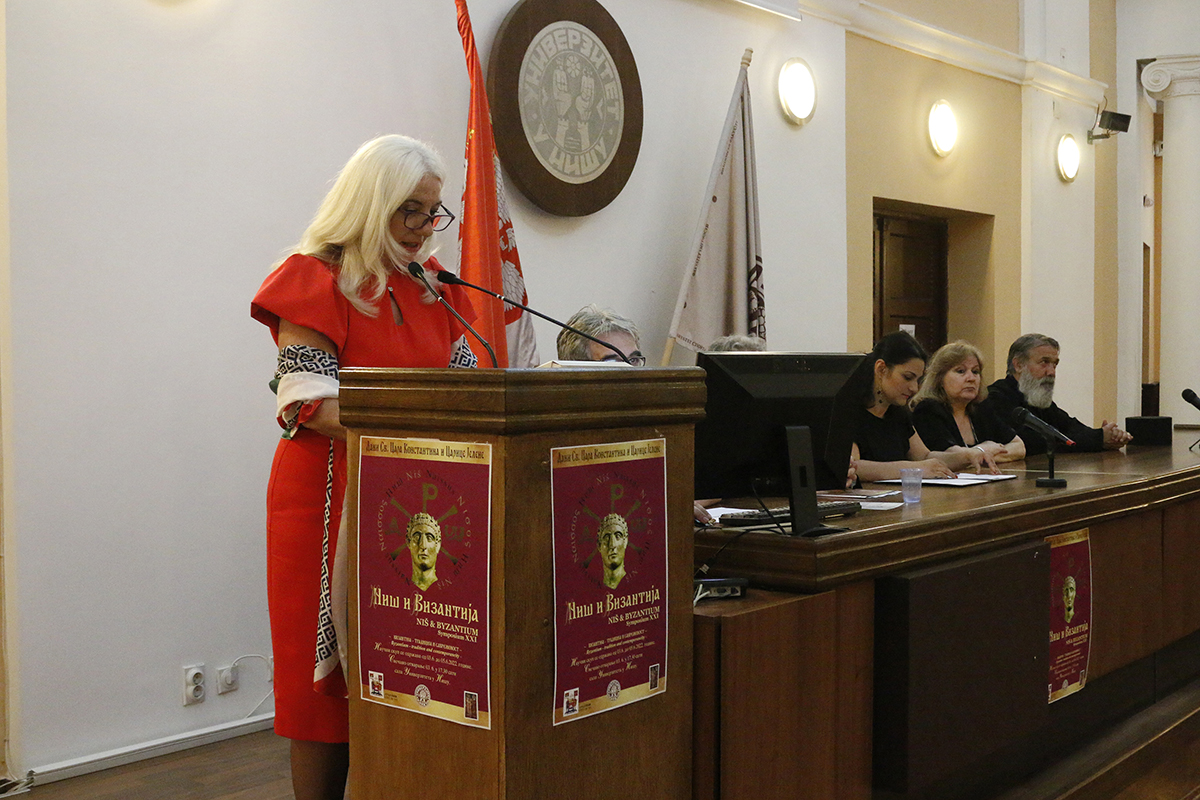
Deputy Mayor Mrs. Dušica Davidović, welcoming speech (photo by M. Lavrenčić)
Two years ago the subtitle that we used for our gathering stated that the time of the Resurrection of Byzantium and the Praise of the Truth is coming. It is difficult for the truth about the Orthodox Empire of the Romans, better known as Byzantium, about its civilization, culture, art, to break through. A lot of effort needs to be invested, and Byzantologists have evidently contributed to this, in order to change the old feeling towards Byzantium, a feeling that is known to everyone here and we will not deliberate on it, because we would be exposed to the danger of being accused of leading the so-called the "Byzantine Debate", which is often incomprehensible to Western Europeans, and which has been carried on for so long that, in the end, the reason for which it was started is forgotten.
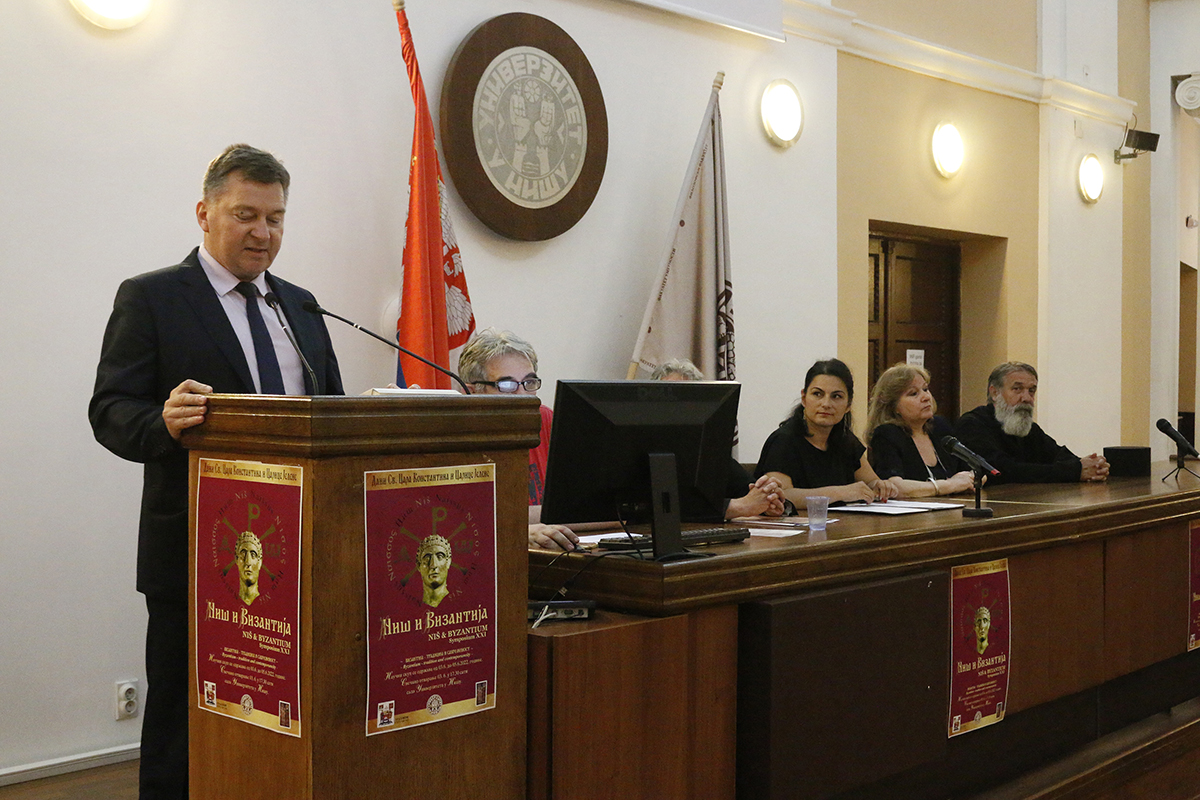
Vice-rector Prof Dr Jovan Stepanović, University of Niš (photo by M. Lavrenčić)
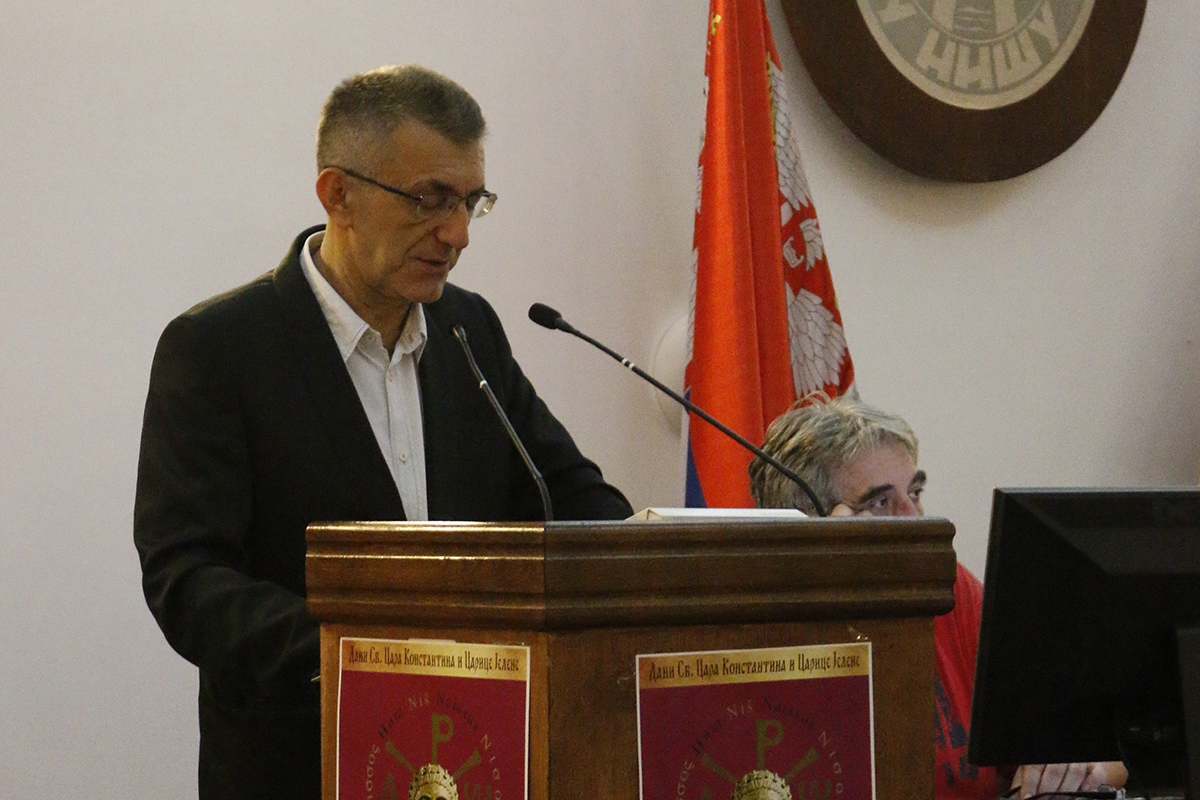
Academician Prof Miodrag Marković, opening of the scientific gathering (photo by M. Lavrenčić)
However, we must remember that the legacy of Byzantine civilization and art permeates the historical and spiritual fabric of Europe which often tries to forget it. We have forgotten great cities built by the Romans, civil life and manners, respectable city families, the contribution of famous intellectuals, beautiful architectural achievements, frescoes, icons, sculptures, and works of applied art. Little is known about philosophy, literature, poetry, music. Byzantine aesthetics are not studied enough. Both Western Europe (in its attempt in 2000 to set up the permanent exhibition in the European Museum in Brussels starting from 812 with Charlemagne, without ancient Greece and Byzantium) and Eastern Europe (with its insufficient study, protection and presentation of its cultural and monumental heritage) seem to renounce its glorious past and slowly enter a dead end. Relying on tradition and looking for role models in the past is not in "fashionable" today. The bridge between ancient times, especially old Hellas, with the new age was established by Byzantium. Over that bridge European culture is still supplied with the achievements of vanished civilizations, often forgetting who built the bridge, and sometimes not hiding the intention to destroy it. Byzantologists used their knowledge to stop the demolition of that bridge to which the International Symposium of Byzantologists Niš and Byzantium made a visible contribution.
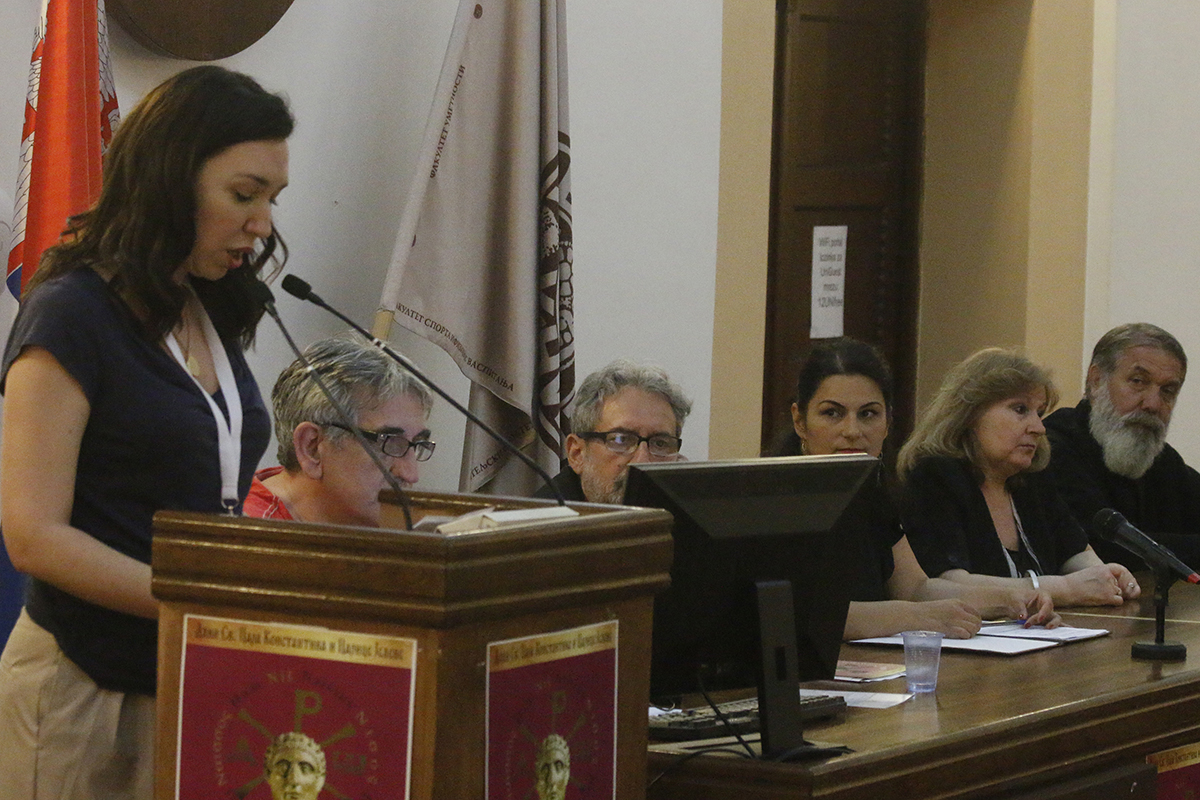
Prof Branka Vranešević, Promotion of Proceedings No XX (photo by M. Lavrenčić)
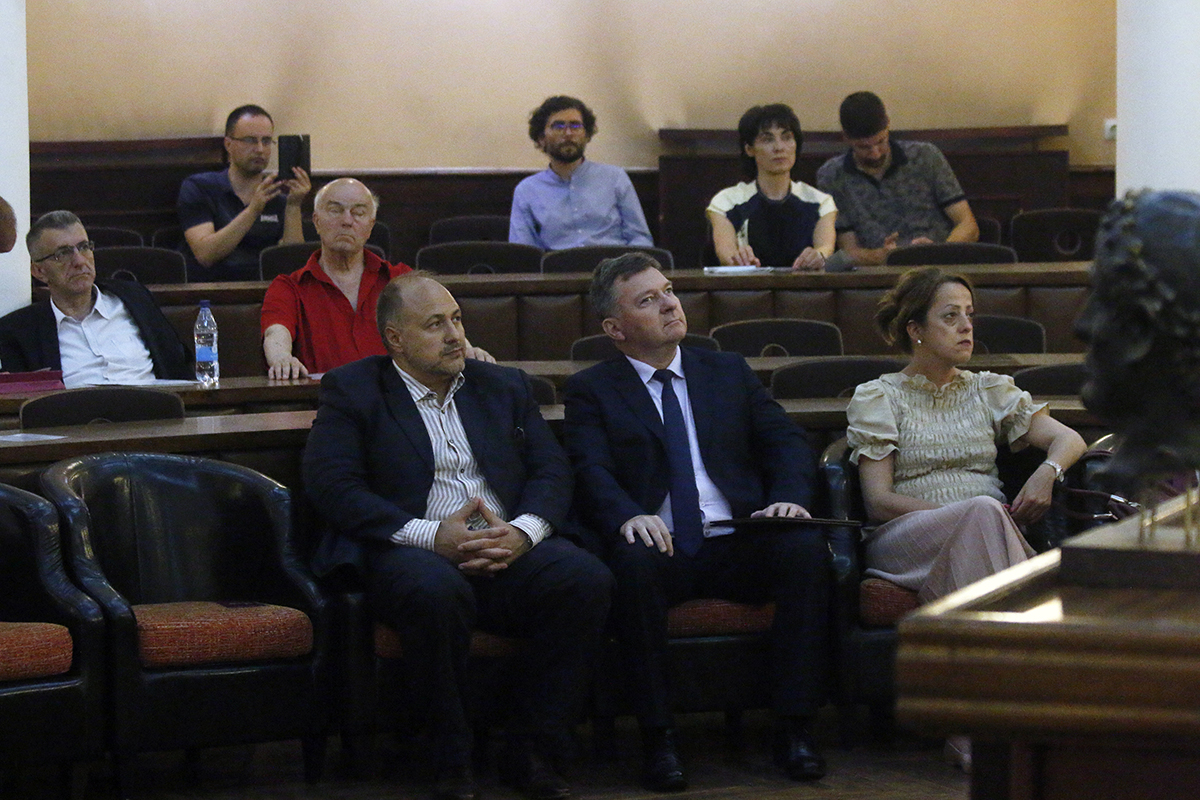
Beginning of work (photo. M. Lavrenčić)
That is why I suggest that we forget for a moment the church schism, the words of Petrarch and Voltaire, all the crusades, especially the fourth. We will remember the civilizational and artistic achievements of Romans and the impressive progress of the beautiful new Rome - Constantinople. It is a civilization that accepted, strengthened and spread Christianity which lasts even today. Directly or indirectly the bearers of the legacy of the Byzantine civilization are Eastern and Western Christians, both in the past and today.
The time is coming when the cities of today are formed, which are carriers of civilizational and cultural progress, when civil manners are formed, universities are created. The Byzantines go to the West of Europe to educate and people from the West come to Constantinople to study, works of art are referred to or copied in the "Greek manner", the works of the old wise Greeks are read. This is evidenced by the words of the learned Anna Comnena, the daughter of the Byzantine Emperor Alexius, who said in the 22nd century that in Constantinople: "I can see the Latins getting an education and the Slavs learning Greek." In that contact between the Western European and the Byzantine world, among other things, Humanism and the Renaissance will arise. It is the time when the idea of bringing two worlds together is revived. Today European civilization rests on the achievements of Byzantium, on the same tripod made up of Greek philosophy and literature, Roman statehood and the Christian faith.
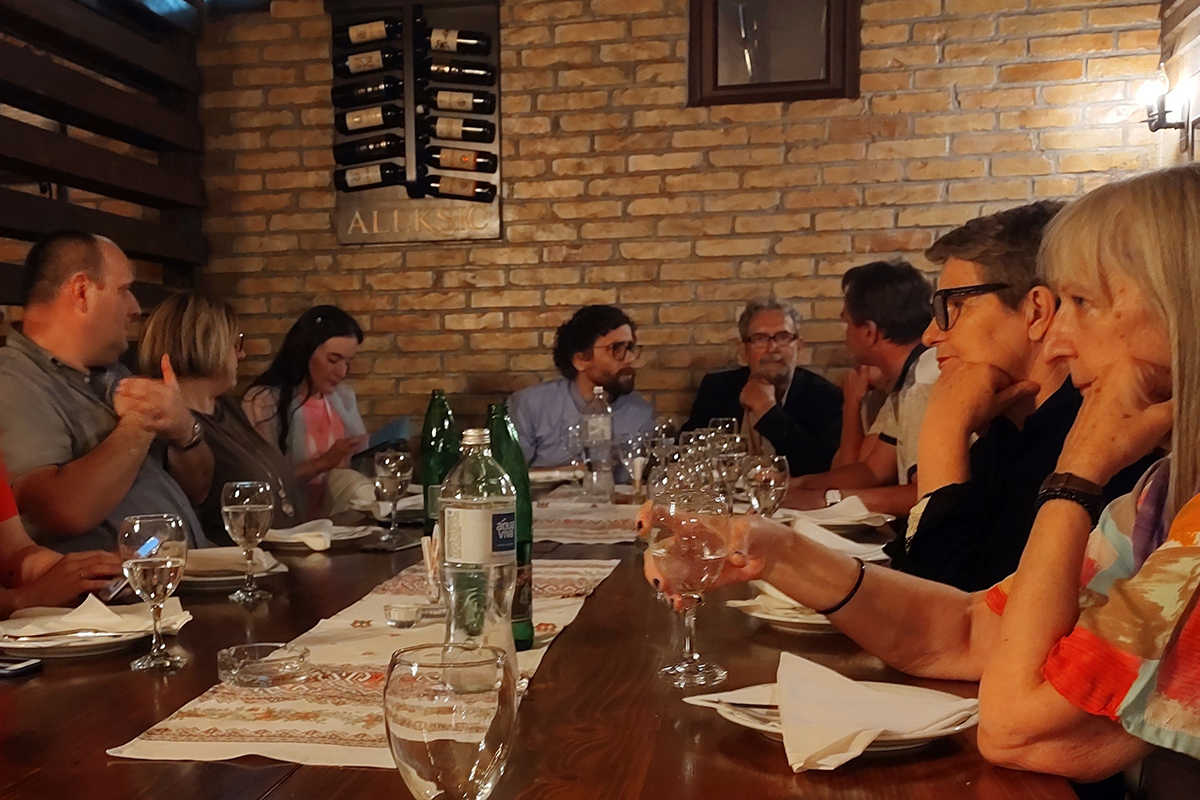
Argumentative discussion
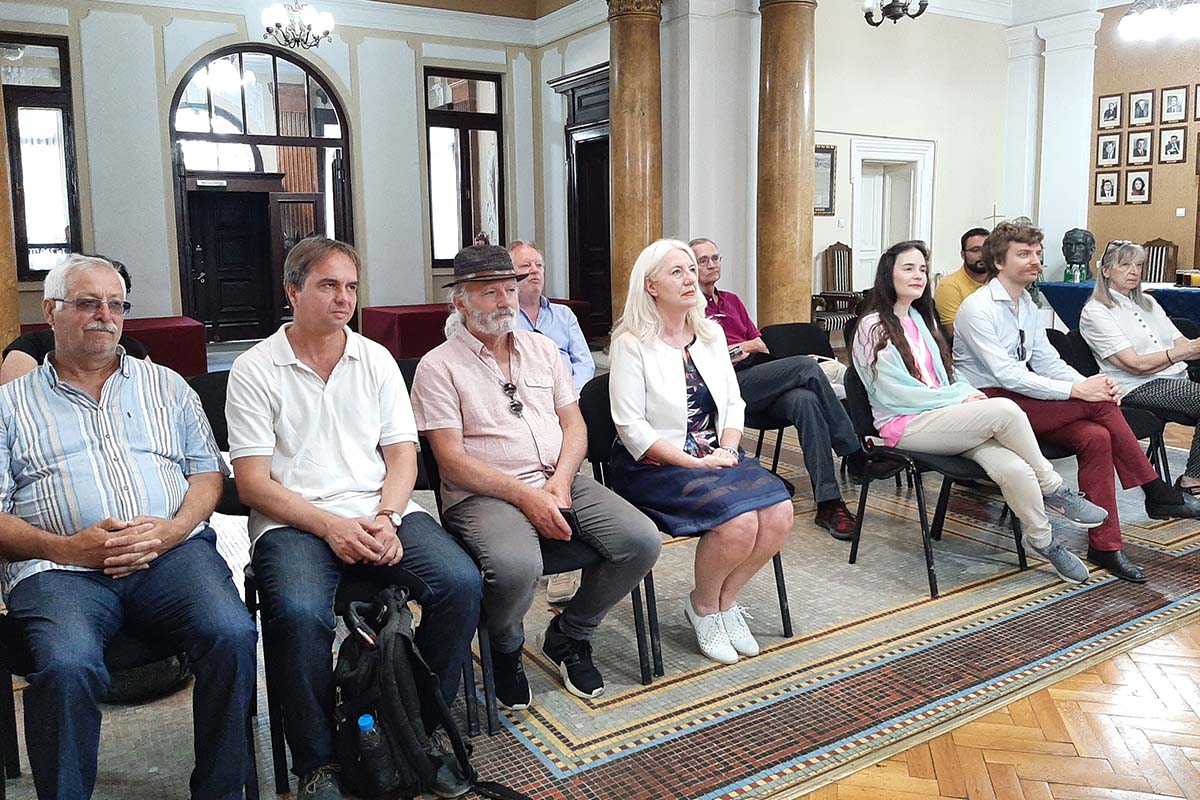
Reception at Niš City Hall Deputy Mayor Mrs. Dušica Davidović with participants of the symposium
The pandemic has not succeeded in silencing the language of science. Now, freed from the pressure of the pandemic, the largest number of participants presented their works live. The start of the symposium was scheduled live for June 3 at 5:30 p.m. with a ceremonial opening in the large hall of the University of Niš. Niš and Byzantium Symposium began its work with the blessing of the Bishop of Niš Arsenije. After the introductory speech by Dr Misha Rakocija the Deputy Mayor Dušica Davidović greeted the audience with chosen words, emphasizing the importance of the gathering for Niš and its monumental heritage, reputation in the world and the readiness of the city to gather and host prominent Byzantologists every year. The vice-rector Prof Jovan Stepanović addressed the audience on the behalf of the University of Niš. The symposium was opened by the member of Serbian Academy of Science and Arts, Academician Prof Miodrag Marković. The Proceedings from the 20th Niš and Byzantium Symposium held in 2021 were presented by Dr Branka Vranešević. The opening ceremony was graced by the Niš Symphony Orchestra Trio (Tajana Mijović Petrović playing violin, Stefan Stefanović and Suzana Savić playing violas). The opening of the symposium, presentation of papers and web presentations can be seen on the website of the symposium.
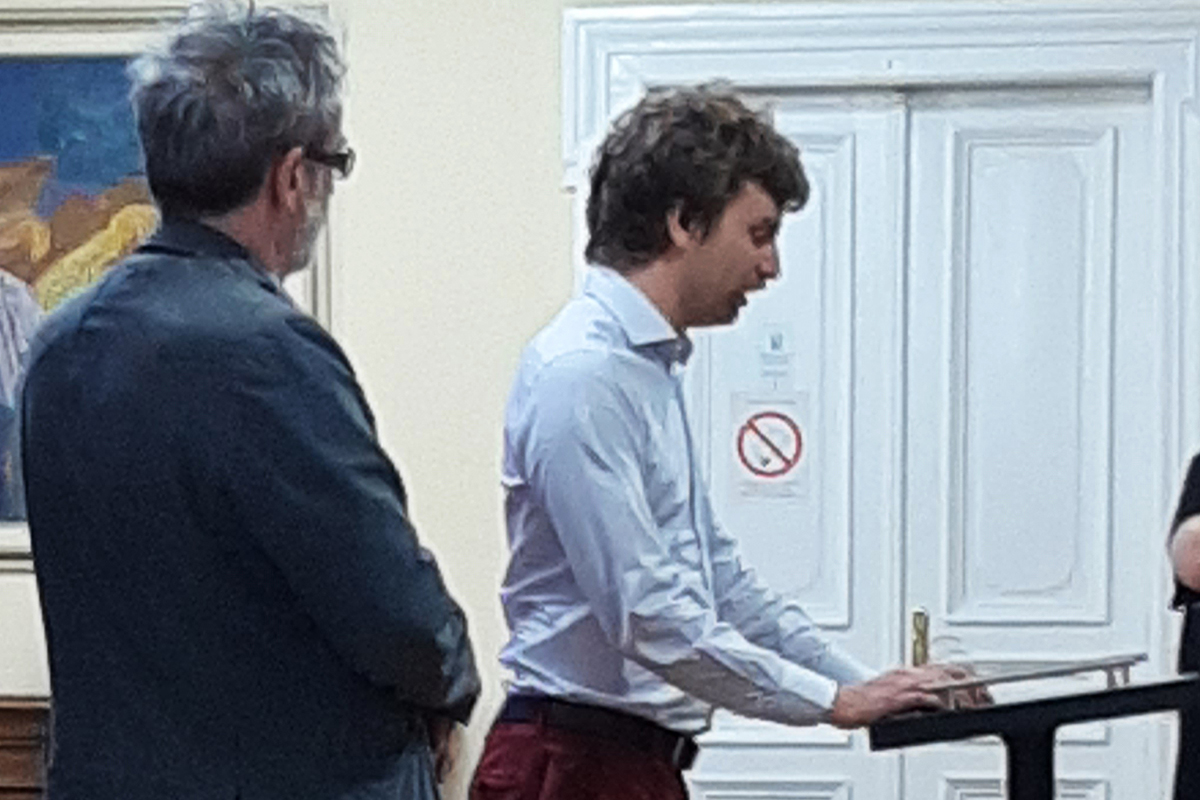
Reception at Niš City Hall, the address by Dr Marco Fasoli (University of Eastern Piedmont, Vercelli, Italy)
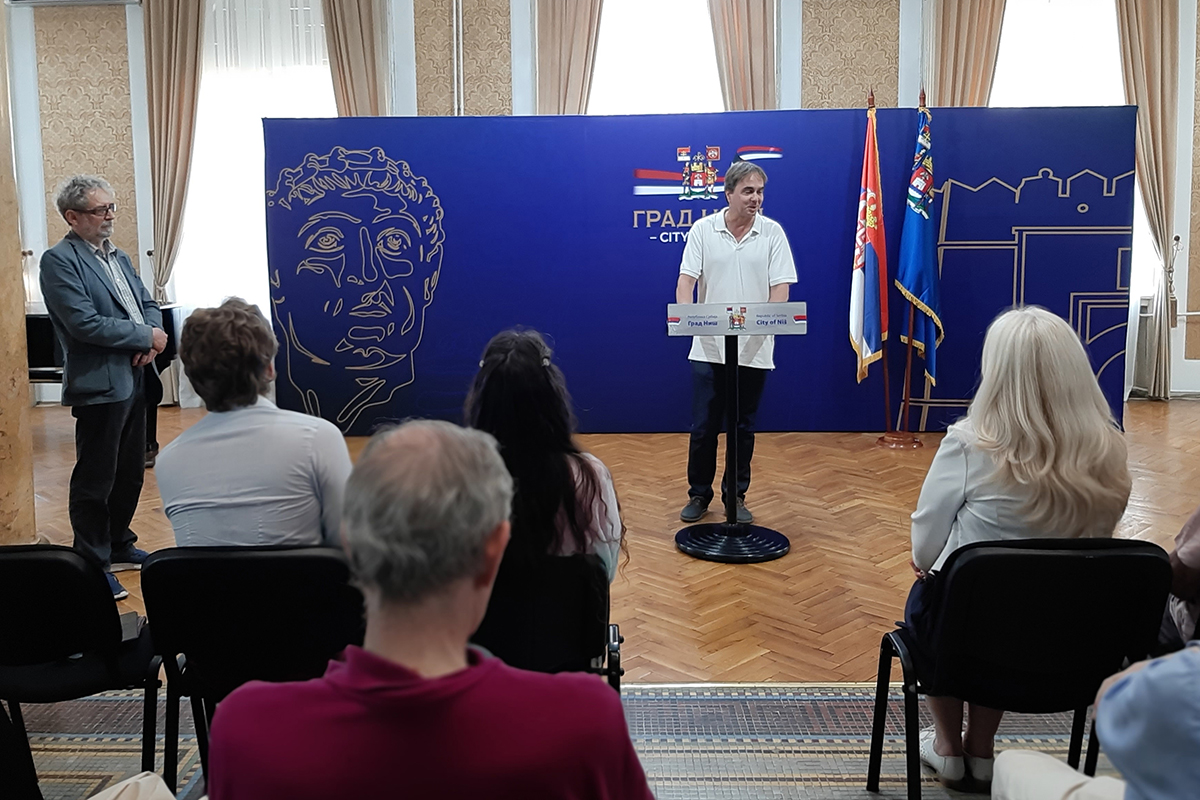
Reception at Niš City Hall, the address by Prof Ive Topalilova, Sofia
At the end the participants of the symposium were received in the Town Hall by the Deputy Mayor Mrs. Dušica Davidović. On behalf of the participants Dr Marco Fasolio (University of Eastern Piedmont, Vercelli, Italy) presented their impressions of the symposium, while Prof Ivo Topalilov from Sofia pointed out the exceptional importance and scientific representativeness of the Niš Symposium of Byzantologists. After the ceremonial reception the guests visited the Latin Church in Gornji Matejevac (11th century) and the Skull Tower made of the skulls of the heroes from the Battle on Čegar Hill (1809).
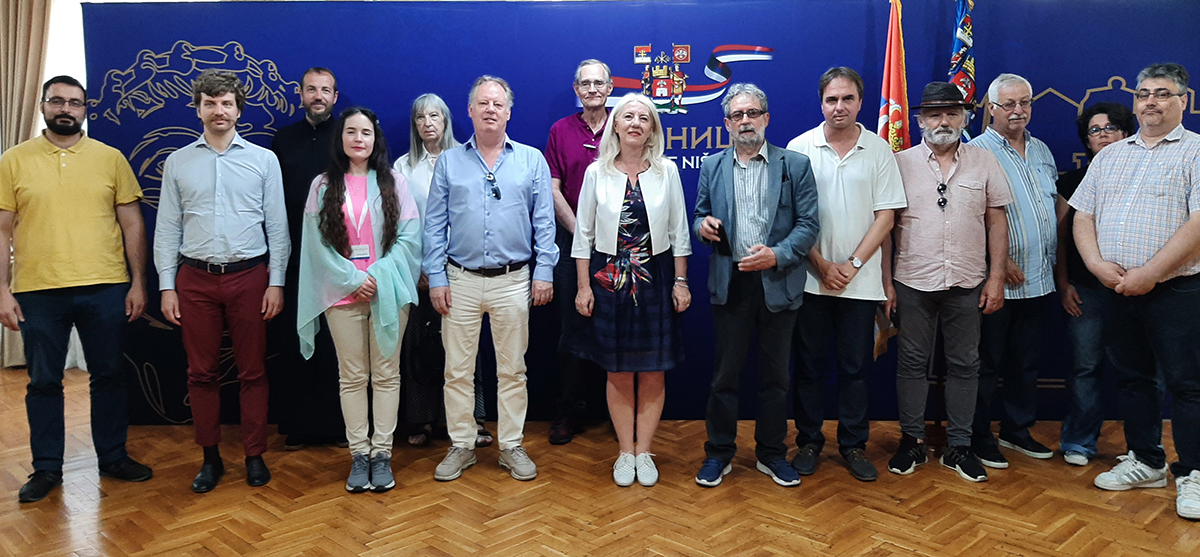
Symposium participants
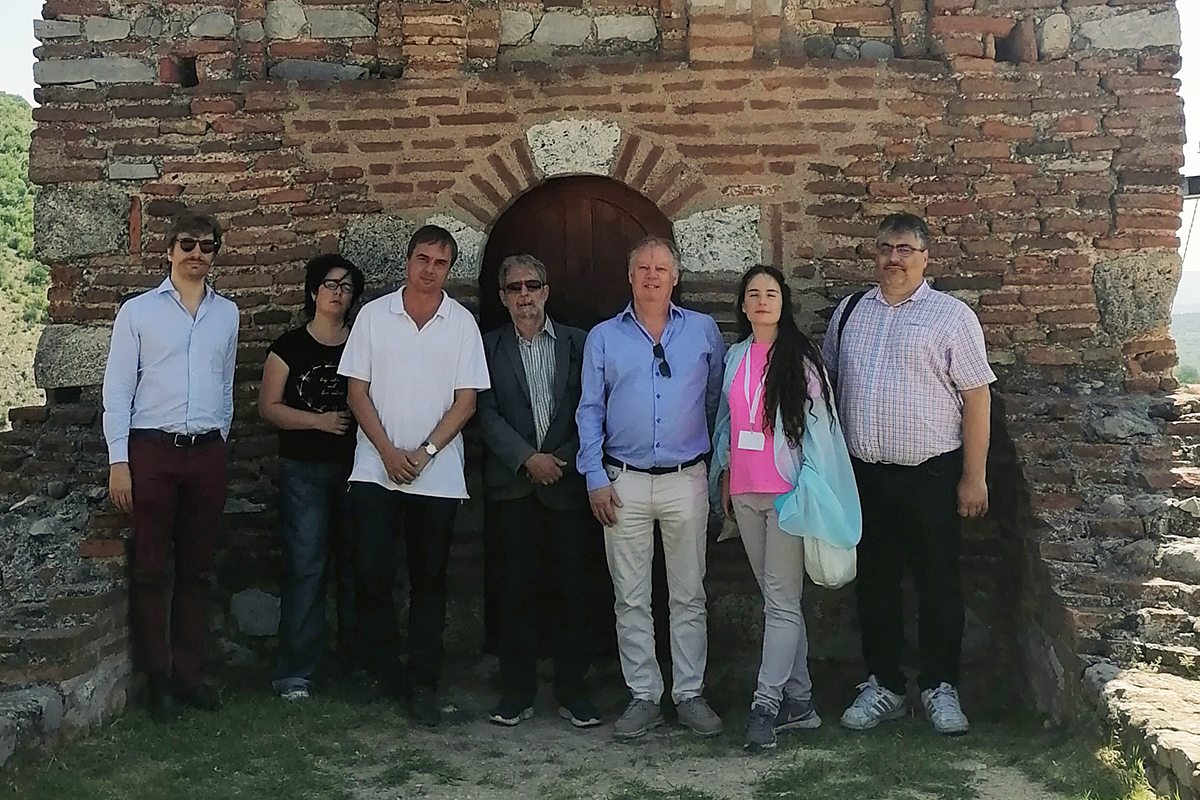
Tour of the Latin Church in Gornji Matejevac, XI century, (Dr Marko Fasolio (Turin),
Dr Zlatomira Gerdžikova (Sofia), Dr Ivo Topalilov (Sofia), Dr Miša Rakocija (Niš),
Dr Lars Ramskold (Stockholm), Dr Andjela Gavrilović (Belgrade), Milen Markov (Sofia)
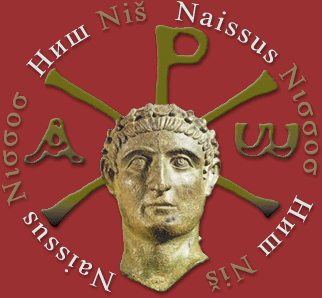
![]()


